One day I was peeling a potato. Half way through, I noticed one side of the potato was bright green. Unsure of the virtues of eating green potatoes, I asked Google if they were safe; a firm NO was the answer. A couple of days later, Ma gave me a bag of potatoes; when I got home, I noticed they were all green. Alarmed, I rang her up to see what she meant by giving me a bag of green potatoes, and she said,
“They’re fine, just eat them – your Dad does and he’s ok.”
Struck by the dilemma of every modern woman – who to believe, Google or Mother – I decided to eat some of the potatoes, but, to be on the safe side, I sent the following letter to my Sister:
Please open in the event of my untimely death from green potato poisoning.
It was Ma! She fed me green tatties. Da too.
You might want to check on him.
Ma will probably say he’s up his plot, but I think you’ll find he’s in it!
I guess she finally won the Sunday crossword and doesn’t want to share the winnings.
Please don’t be too sad, I had a good life.
Love, Your Sister.
Recent research confirmed that Google was right and Ma – amateur poisoner and crossword doer – was wrong. The green in green potatoes indicates the presence of a toxin called solanine – which can cause nausea, vomiting, abdominal pain, nightmares, hallucinations and, in severe cases, coma and death.

After my brush with filicide I got to thinking about, well, potatoes, and decided to do some further research. You may be surprised to know that behind the innocent façade of the Solanum Tuberosum (fancy for spud) lies a world of intrigue, fanaticism, religious controversy, crime and disaster.
Hold on tight. This is gripping stuff.
Potatoes have been around since Adam was a lad; though it is unlikely that he ate any, given he lived in Africa, whereas potatoes are indigenous to South America, specifically Peru. Indeed, potatoes only made their way to Europe (and from there, the rest of the world) in the 1500’s, when the thieving Conquistadors returned to Spain having destroyed the Incan civilization – bringing with them hordes of stolen gold, syphilis and a few potatoes.
The Incans loved their tatties and were thought to have begun cultivating them as early as 8000 to 5000BCE. To aid in the cultivation of their most precious crop, the Incans worshipped the potato Goddess, Axomama (lit. Potato Mother). Besides their obvious merits as a nutritious food source, potatoes provided the Incans with insurance against crop failure due to a process of freeze drying, called chuno, which could be preserved for up to 10 years. Not only did chuno eliminate the threat of starvation for the living, it was also buried with the dead to sustain them in the afterlife.

Given the sheer magic of these little tubers, you’d think the Europeans would’ve gobbled them up; but they took to syphilis far quick than potatoes, viewing the latter with suspicion, believing them only fit for livestock. Belonging to the Nightshade shade family, some folk viewed potatoes as downright evil, due to the presence of atropine – the key ingredient in Witches’ flying ointment (or so it was thought). Although I cannot attest to the potato’s flight-inducing properties, I do know, if you eat too many of the deep-fried chipped variety, you’ll be hard pushed to get off the ground.
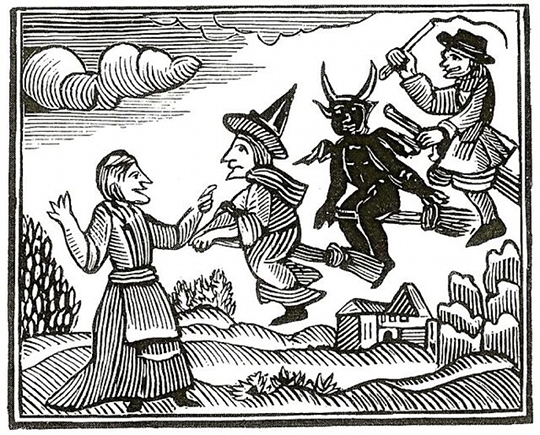
One person who turned things around for the Solanum Tuberosum, was Frederick the Great (1712-1786) – Prussian King and potato enthusiast – renowned for transforming his modest state into a major European power and for planting the first potatoes in Berlin (naturally, he got a peasant to do the digging for him).
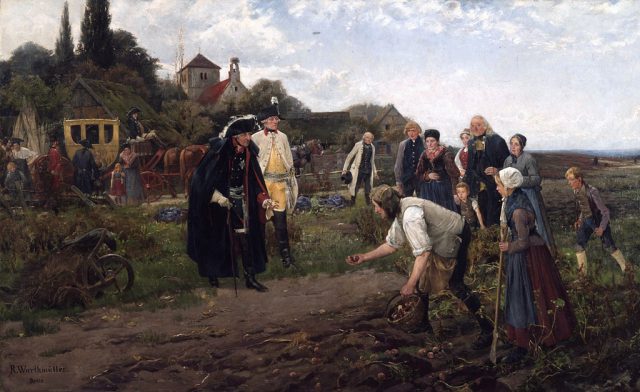
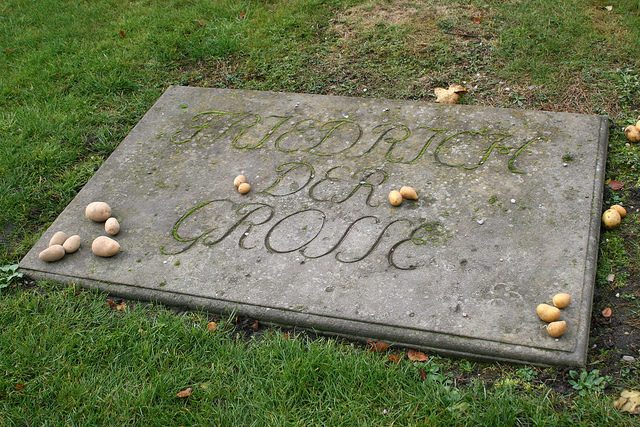
The potato was introduced into the English diet over 200 years ago. The first taste-test, courtesy of the Royal Court, did not go down too well, due to the fact the leaves were served and tubers tossed. The English eventually cottoned on to the fact that the tubers possessed more culinary merits than the leaves, and potatoes have been part of the English diet ever since. However, Protestants in Southern England weren’t too keen on them – fearing they signaled the advance of Catholicism. Indeed, a popular 1765 election slogan in Lewes was – “No potatoes! No popery!”
In Scotland, there was even less enthusiasm for potatoes; indeed, they were vehemently opposed by Presbyterian Ministers, on the grounds there is no mention of them in the Bible. Tartan hemmed trousers don’t get a mention either – but they, like potatoes, flourished despite their lack of Biblical endorsement – much to the delight of tattie loving, Bay City Roller fans everywhere.
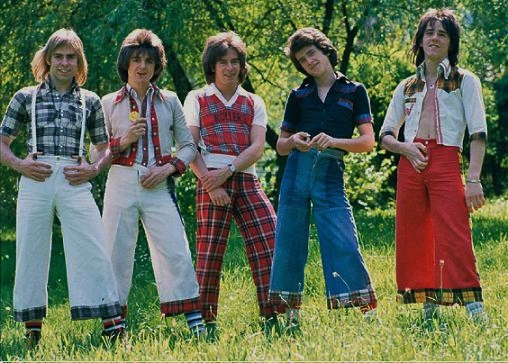
Potato blight – a type of fungus that turns harvest-ready potatoes to mush – spread across Europe in 1845-47. It devastated entire crops, placing huge pressure on Europe’s food supply. In Ireland, where the majority of the population lived on potatoes, the blight proved catastrophic. Over a million people died of starvation and another million emigrated, causing the population to drop by up to 25%. The fact that large quantities grain crops continued to be exported from Ireland during the famine, made this grisly disaster an outrage – the far-reaching consequences of which are still present today.
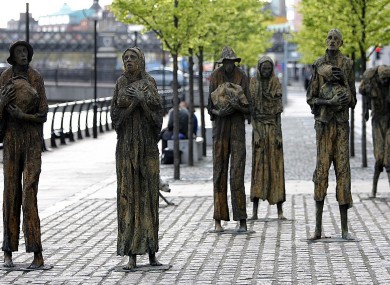
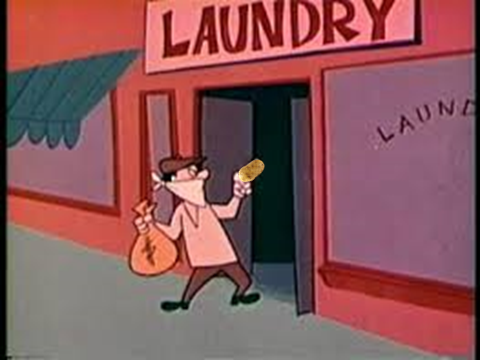
Potatoes may not have inspired the criminal fraternity to any great extent, but they have certainly inspired artists. Greatest among them is Vincent van Gough and his seminal work, The Potato Eaters.

The Potato Eaters is not only interesting for its place in van Gough’s oeuvre, but also for its representation of the role potatoes played in the industrial revolution. Pre-complex-mechanization, the backbone of industry was the working class (aka peasants); had they been fed a grain based diet only – subject to crop failure, famine and high mortality rates – the industrial revolution would likely have stalled, reliant as it was and a numerous and physically fit workforce. Indeed, Marxist Friedrich Engels declared potatoes – rich as they are in calories and nutrients – the equal to iron for their revolutionary role.
There are over 4000 varieties of potatoes and they are the world’s 4th largest food crop. Potatoes are the first food to have been grown in outer space, and they inspired one of the world’s best loved and highest selling toys, Mr Potato Head – whom, incidentally, I once went dressed as to a party (which, unfortunately for me, turned out not to be a costume party). Google the word potato and you get 200,000,000 results (Brad Pitt only gets 65,900,000). If that’s not enough, you can visit one of the world’s 9 potato museums; where you will discover the history, importance and interesting facts about potatoes, not to mention their dazzling visual display potential.

Rebecca is a painter, collage artist and writer. Originally from New Zealand, she now lives on a little Island in the Irish Sea. She has a degree in Religious Studies and is passionate about religious history, philosophy and esoteric goings on. Her favourite research topic is peculiar religious figures; those people who, through their devotion and vision of the divine, challenged the religious establishments to which they belonged, sometimes being crushed by those establishments, other times irrevocably changing them.
You can contact her and/or find her artwork and other writing on her website rebeccaodessa.com

